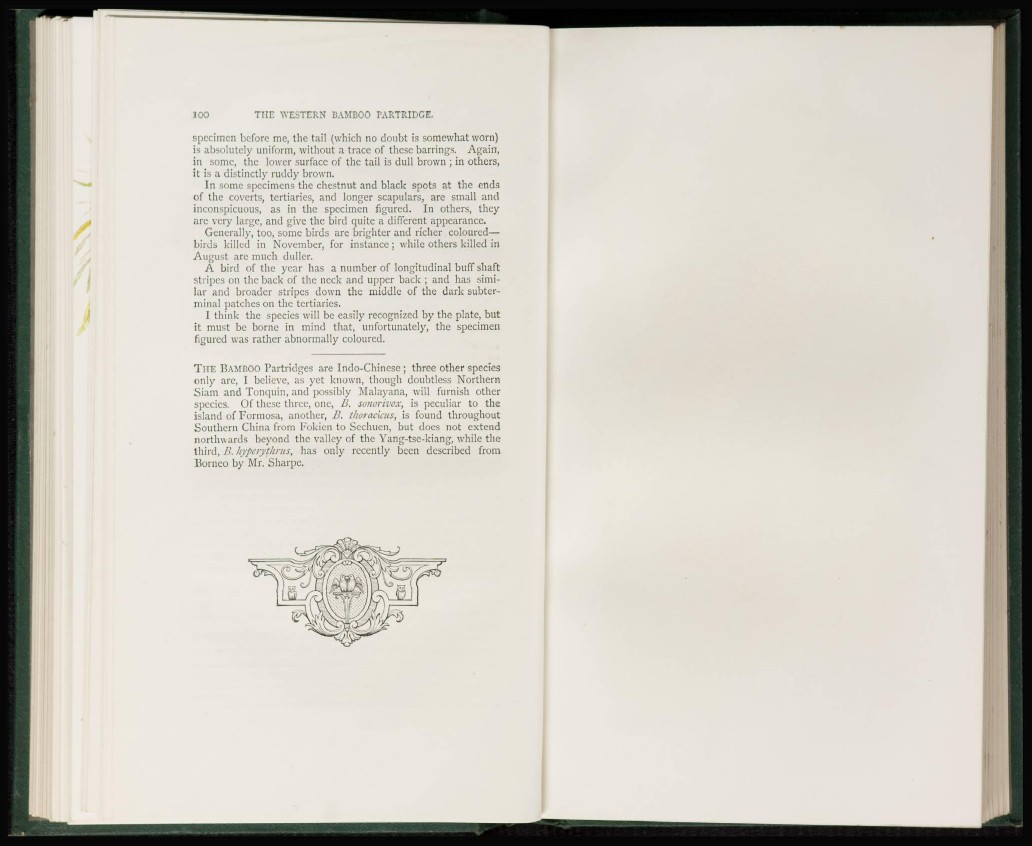
specimen before me, the tail (which no doubt is somewhat worn)
is absolutely uniform, without a trace of these barrings. Again,
in some, the lower surface of the tail is dull brown ; in others,
it is a distinctly ruddy brown.
In some specimens the chestnut and black spots at the ends
of the coverts, tertiaries, and longer scapulars, are small and
inconspicuous, as in the specimen figured. In others, they
are very large, and give the bird quite a different appearance.
Generally, too, some birds are brighter and richer coloured—
birds killed in November, for instance; while others killed in
August are much duller.
A bird of the year has a number of longitudinal buff shaft
stripes on the back of the neck and upper back ; and has similar
and broader stripes down the middle of the dark subterminal
patches on the tertiaries.
I think the species will be easily recognized by the plate, but
it must be borne in mind that, unfortunately, the specimen
figured was rather abnormally coloured.
T H E BAMBOO Partridges are Indo-Chinese ; three other species
only are, I believe, as yet known, though doubtless Northern
Siam and Tonquin, and possibly Malayana, will furnish other
species. Of these three, one, B. sonorivox, is peculiar to the
island of Formosa, another, B. lliorackns, is found throughout
Southern China from Fokicn to Scchuen, but does not extend
northwards beyond the valley of the Yang-tse-kiang, while the
third, B. hyperythrus, has only recently been described from
Borneo by Mr, Sharpe.